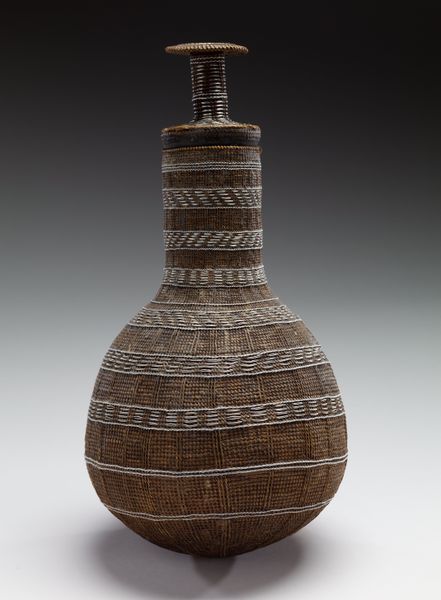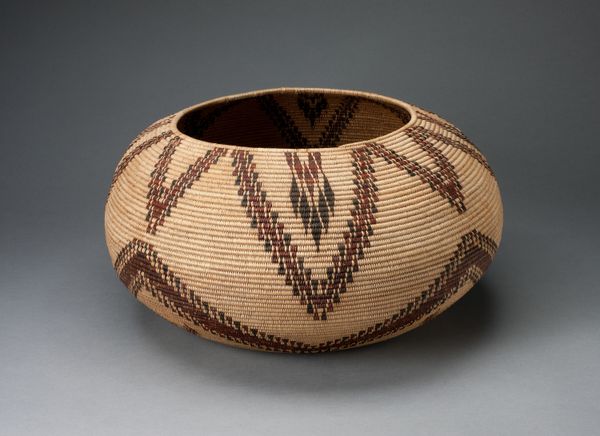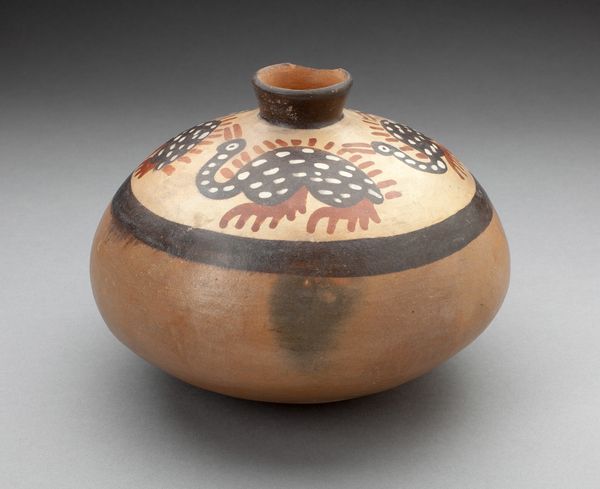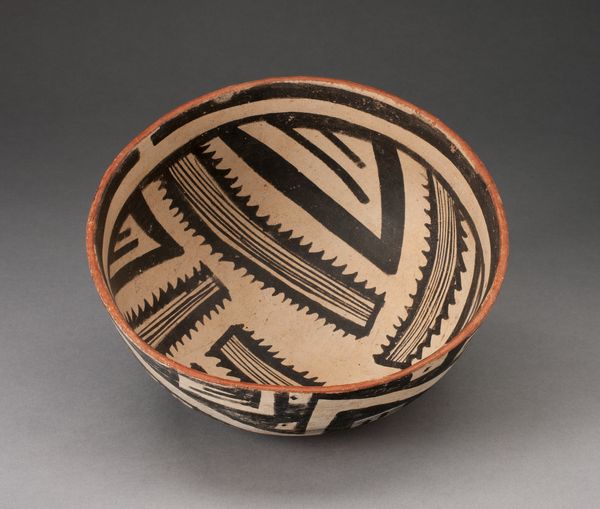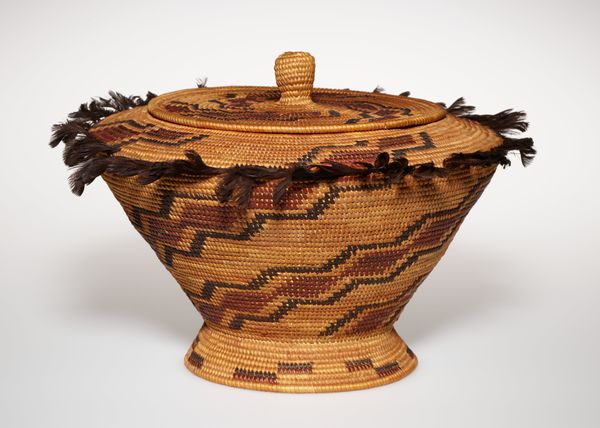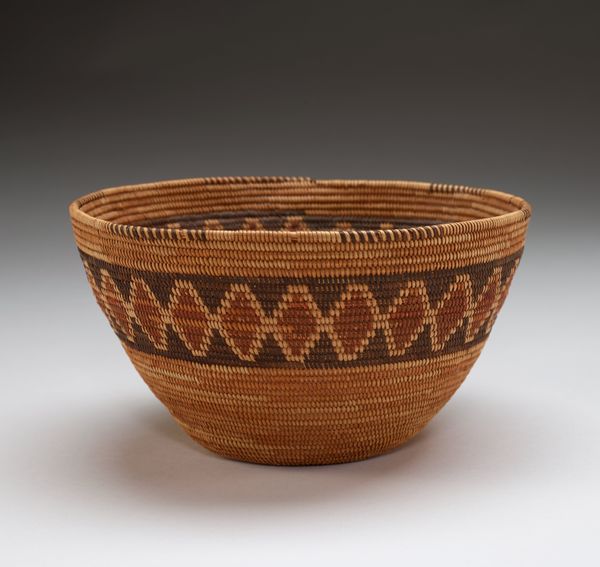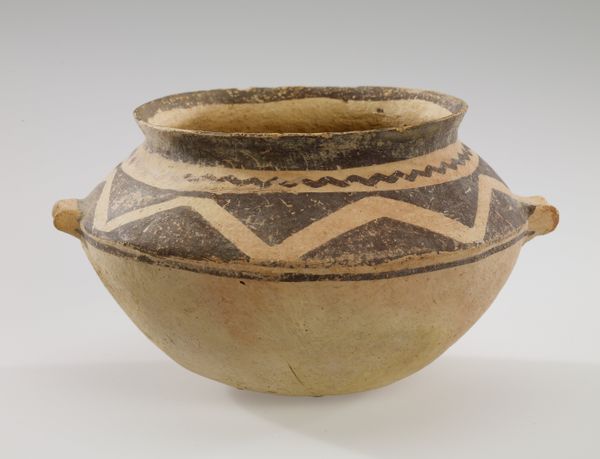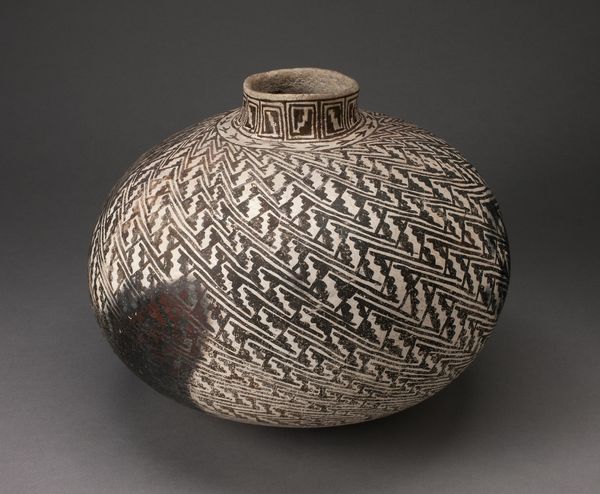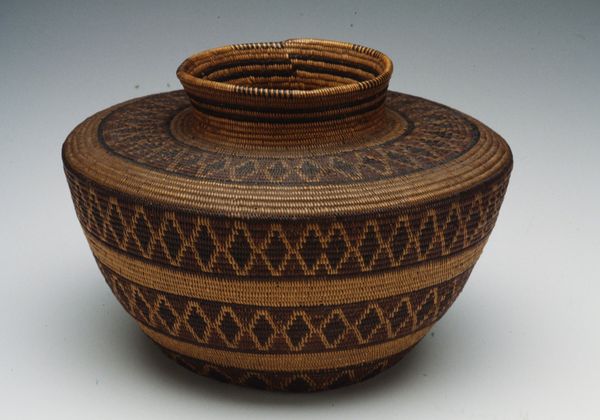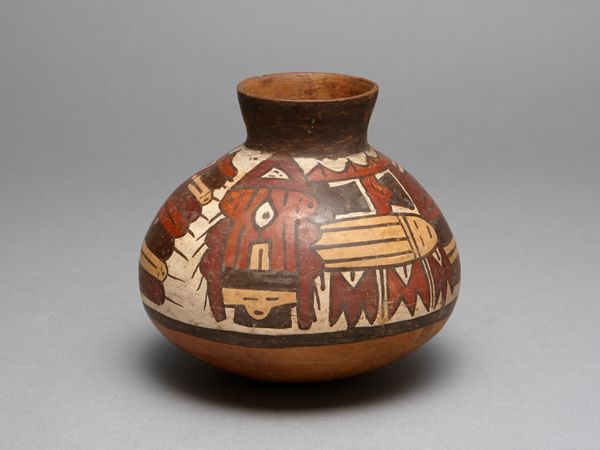
fibre-art, weaving
#
fibre-art
#
weaving
#
geometric
#
ceramic
#
decorative-art
#
indigenous-americas
Dimensions: 4 3/4 × 5 5/8 × 5 5/8 in. (12.07 × 14.29 × 14.29 cm) (overall, with cover)
Copyright: No Known Copyright
Curator: Here we have a lidded basket, crafted around 1920 by Elizabeth Hickox, a Karuk weaver from Northern California. The basket is a beautiful example of indigenous artistry, showcasing intricate weaving techniques. Editor: It's really striking! I'm immediately drawn to the contrast between the dark brown and light tan. The geometric patterns almost seem to vibrate against each other, like a visual echo. Curator: The sharp, zigzagging motifs are quite typical of Karuk basketry. We see these designs repeated in other examples of her work. These shapes are not merely decorative; they carry cultural significance. Editor: Exactly. It invites us to consider the symbols' embedded meanings and the maker's perspective. What might those jagged shapes represent for the Karuk people? I can't help but also think about the complex politics of representation. How do we engage with the artist and object across differences in race and class and power? Curator: Absolutely. The history of Indigenous art is inextricably tied to cultural preservation and political resistance. This particular piece, now held at the Minneapolis Institute of Art, highlights a specific moment in time, shortly before Hickox gained renown for revitalizing traditional Karuk weaving, influencing a revival throughout the mid-20th century. The choice of materials—likely locally sourced—reflects both resourcefulness and a deep connection to the land. Editor: I also notice the skill it must have taken to create that rounded shape and tight weave! Think about the generations of knowledge transfer, likely through women in the community. Craft becomes a way to share intergenerational values. Weaving functions as a form of cultural continuity—not just in this piece, but across diverse indigenous communities, even today. Curator: It's a remarkable piece, bridging artistic expression and cultural identity, a visual document that embodies community. It provides tangible evidence of a rich cultural legacy. Editor: Agreed. Looking at "Basket" encourages me to be critically mindful and to contemplate how art history can address and encourage meaningful dialogue across past and present, inviting us to question traditional and conventional narratives.
Comments
minneapolisinstituteofart almost 2 years ago
⋮
Elizabeth Hickox is widely recognized as being one of the most important indigenous basket makers of the 20th century. Her work is incredibly fine, with as many as 800 stitches per square inch. Hickox combined plant material, usually maidenhair fern, with yellow porcupine quills (dyed with lichen) to create a strong color contrast and dynamic abstract designs. The lid’s tall knob handle is one of Hickox’s hallmarks and her own invention. Working at the height of the “Indian basket craze” in the late 19th and early 20th centuries, Hickox sold her unique baskets exclusively to the art dealer Grace Nicholson, who marketed them for her to collectors and museums. An artist and entrepreneur, Hickox was able to provide a steady income to travel, support her family, and live a cosmopolitan life.
Join the conversation
Join millions of artists and users on Artera today and experience the ultimate creative platform.
